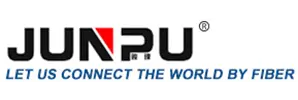

An optic distribution frame (ODF) is one of the fiber optic network components used in fiber optic networks to terminate and manage fiber optic cables. It provides a centralized point for patching, splicing, and organizing the network cables. ODFs typically have a modular design with rack-mounted panels and adapter ports for connecting and routing fiber optic cables. They facilitate easy maintenance, troubleshooting, and expansion of the network by providing a structured and organized framework for managing fiber connections.
1. Data Centers: ODFs play a crucial role in data centers where high-density fiber connections are required. They provide a centralized point for terminating and managing optical fibers from multiple racks and equipment. ODFs help facilitate efficient connectivity and flexibility for data center operators.
2. Telecom Central Offices: ODFs are extensively used in telecom central offices to terminate and manage large volumes of fiber optic cables. They act as the main distribution point for routing fibers from long-haul or metro networks to local distribution points.
3. Campus Networks: ODFs are deployed in campus networks, such as universities or corporate campuses, where multiple buildings and network cabinets need to be interconnected. They provide a structured and organized interface for interconnecting fibers, allowing for easy scalability and reconfiguration.
4. Fiber to the Home (FTTH) Deployments: ODFs are an integral part of FTTH deployments, as they serve as the termination point for fiber cables that provide high-speed internet and multimedia services to individual homes. ODFs enable easy connection and management of fibers in the last mile distribution network.
5. Broadcasting and Media Applications: ODFs find usage in broadcasting and media applications where large amounts of fiber optic connections need to be managed. They provide a reliable and efficient means of connecting broadcasting equipment, studios, and transmission networks.
6. Enterprise Networks: ODFs are increasingly being deployed in enterprise networks to manage the fiber optic backbone infrastructure. They help consolidate and organize the connectivity between network equipment, server rooms, and IDF/MDF (Intermediate Distribution Frame/Main Distribution Frame) locations.
The main components of an ODF include fiber optic patch panels, splice trays, cable management systems, adapters, and connectors. These components help organize and protect the optical fibers, facilitate connections, and ensure proper routing and management.
The primary purpose of an ODF is to provide a structured and accessible interface for terminating and distributing optical fibers. It allows for efficient management, testing, and maintenance of fiber optic connections in a network.
There are several types of ODFs, including rack-mountable ODFs, wall-mountable ODFs, and floor-mountable ODFs. The choice of ODF type depends on factors such as available space, network size, and installation requirements.
A patch panel is used for connecting and patching fiber optic cables together, allowing for easy changes or modifications in the network. On the other hand, a splice tray is used for housing and organizing fiber optic splices, which are permanent connections made by fusing or mechanically joining fibers.
Yes, ODFs are typically designed to be scalable and allow for future expansions. Additional patch panels, splice trays, or cable management components can be easily added to accommodate increasing fiber counts or additional network equipment.
 Call us on:
Call us on:  Email Us:
Email Us:  Wanhua Science and Technology Park, No. 528, Shunfeng Road, Donghu Street, Linping District, Hangzhou City, Zhejiang Province
Wanhua Science and Technology Park, No. 528, Shunfeng Road, Donghu Street, Linping District, Hangzhou City, Zhejiang Province